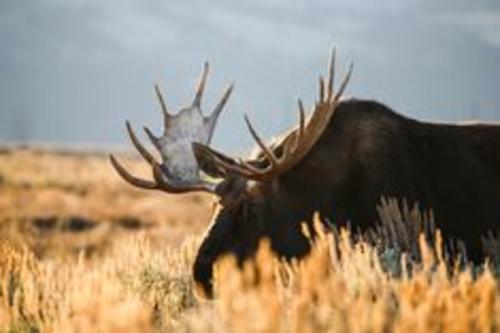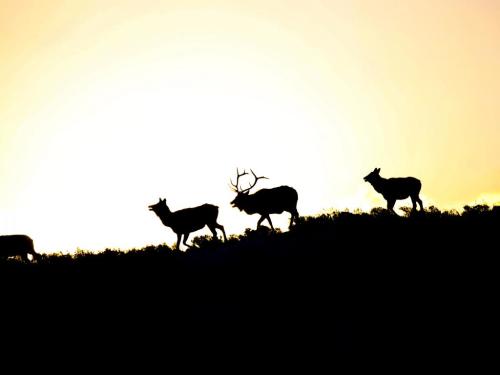Spring in the Rockies is one of the most rewarding experiences for wildlife enthusiasts. Bald eagle, osprey, and peregrine populations are joined by migrating sandhill cranes, trumpeter swans, and common loons. Yellow-billed cuckoos and forest raptors are some of the first birds to observe as the snowpack begins to run off creating the headwaters of the Snake River Plateau.

For all the abundance, spring weather can be unforgiving so be sure to pack for a range of layers and check to see what the forecast has in store—as Jackson Hole can range from single digits in the mountains at night to nearly 60 degrees as spring tries to break through the long winters.
Being aware of runoff conditions is critical to safe recreation and being mindful of temperatures as runoff can pick up and snowbanks can fall into the rivers and streams quickly. But one of the all-time favorites for local and animal lovers, when the springtime temperatures swing from one extreme to another, is skiing the corn in the northern parts of the Jackson Valley and in Grand Teton National Park.

There is always a short window where the park roads have been plowed but are not open to motorized traffic. Instead bust out your roller blades, longboard, cruiser, or road bike and take in the view. This rite of spring cuts off on May 1 when general wildlife closures also expire. Though bear traffic emerging from dens picks up around May 1, depending on snow conditions, encounters with bears can be likely so it’s important to be prepared with bear spray. The first Grizzly Bears can appear around the middle of April and more appear in the first week or so of May. Sows with cubs show up quite a bit later.
With 300 species of birds, 16 species of fish, five species of amphibians, six species of reptiles, and 67 species of mammals, there are many neighbors to watch in action as flora melts out.

From bison, elk, grizzly bears, black bears, wolves, and mountain lions, booking a wildlife tour with experienced biologists can not only take you to secret locales to catch the famous Bear 399 or to show off the remarkable sage grouse mating dance.
Elk typically begin leaving the National Elk Refuge around the first of April, but some can leave much sooner. Other likely sightings and encounters include wolf pups making their first explorations from their dens, while at the same time bison, moose, and elk calving seasons are peaking. Nearly all bison and elk have moved off of the National Elk Refuge in April as they follow the snow melt and vegetation green-up to northern parts of the valley, some as far north Yellowstone National Park.
Birdwatchers rejoice in the spring with the abundance of water making the Tetons a migration mecca for neotropical migrating birds such as western tanagers, hummingbirds, warblers, osprey, and others. Bald eagle eggs should have hatched by the beginning of April and young nestlings are being closely guarded by their brooding parents—if you can find a nest, you can enjoy National Geographic experiences that belong wholly to you.

One hint will be seeing many parked cars on the side of the road with cameras and binoculars out trying to catch Mother Nature in action.
Mother’s Day Brunch at Signal Mountain Lodge is the unofficial start to more summer-like activities in the park with roads cleared and facilities opening up. Heading up to the park with your mom is more than a bucket list item, it’s a local tradition.
Grand Teton Road Opening Dates:
May 1st - Teton Park Road (open to non-motorized recreation once plowed in late March)
Mid-May - Moose-Wilson Road, depending on conditions.
April/May - Other Park roads depending on conditions.
For Jackson Hole Chamber of Commerce Wildlife Tour Operators, click here.
